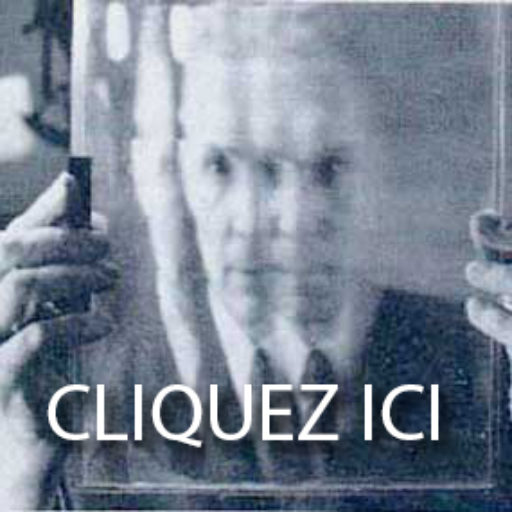Maurice Bonnet and 3D Photography
Archives and objects of a family of inventive photographers: a web documentary available on reliephotographie.com
Bonnet, Maurice, who followed in the footsteps of Gabriel Lippmann’s “integral photography” (1908) and dedicated his life to lenticular photography. Traces of his work are in the Carnavalet museum (Paris), the Nicéphore Niépce museum (Chalon-sur-Saône) and the Polytechnic Museum (Moscow).
Curiosity for high-quality autostereoscopic 3D imaging and many other kinds of photography: this researcher’s passion is now translated into new media
Discover his adventure through his archives. These documents are the heroes of this new adventure in historical transmission, thanks to a documentary film for the general public made by trainees completing continuing professional education in cinema at Act Formation (Toulouse).
A short chronology
1920s, The first work of Maurice Bonnet, in the middle of the decade in Montmartre, Paris.
1934, Bonnet wins a medal for his 3D photography at the Concours Lepine competition and attracts the attention of his future business partner.
1936, With the creation of the company La Relièphographie, the investments start: patents, construction of a lathe for lenticular screen production, design of several kinds of cameras (the most successful of which will be the OP 3000).
1942, Opening of a successful studio on the Champs-Élysées.
1950, Maurice Bonnet leaves La Relièphographie, creates the company Optique et Mécanique de Précision, and starts government contract work including development of a lathe for screens adapted to 3D aerial photography and of photosensitive lenticular film.
1960, Bonnet starts working for the CNRS, French national research institute, perfecting lenticular film and going back to 3D photography with the OP 3000 camera, including its use for macrophotography (examples of which will be exhibited at the Palais de la Découverte in Paris).
1968, Bonnet’s laboratory at the CNRS (ANVAR division) is the site of experiments in a new economy of innovation. Production methods are perfected to commercialize his research, creation of the first companies licensed to use his new technology.
1980s, Maurice Bonnet continues to work for the CNRS and to transmit his passion for 3D photography to other scientific laboratories, leading to further innovation: after macrophotography, aerial lenticular film and multiple-image microfilm, he turns to 3D in scanning electron microscopy and digital 3D media. His laboratory closes in the early 1990s.
1994, After six years in the Tarn region of France, Bonnet dies in the town of Rabastens.
2018 Creation of a 45-minute film made up of 12 episodes and bonus episodes, allowing viewers to discover the Bonnet story via its archives and as it intertwines with History and 20th century technological innovation in France and the world over.
Bibliography and filmography
· Raymond Lécuyer, Histoire de la Photographie, S.N.E.P. L’illustration, 1945.
· Archival film restored by the CNC: La Technique Moderne au service de la Photographie en Relief, 1947.
· Jacques Polieri, Aujourd’hui, Art et Architecture – Scénographie Nouvelle, no. 42-43, oct. 1963.
· La télévision en relief, journal INFOTEC, INA documentation, no. 5, Marc Chauvière, p. 61, Takanori Okoshi pp. 117-118 (translated by E. de Lacroix de Lavalette), 1980.
· Dominique and Michèle Frémy, in the entry on holography in the QUID encyclopedia, 1987 and 1989 editions, published by Robert Laffont.
· MICAD 92 conference on stereoscopy and computer-aided technologies, Proceedings of the 11th Conférence, 1992.
· Christian Sixou, Les grandes dates de la photographie, Paris, Editions V. M., 2000.
· Multi-author catalog Paris en 3D, de la stéréoscopie à la réalité virtuelle, 1850-2000, text by Michel Frizot, pp. 170-191, Paris Musées/Booth-Cliborn, 2000.
· Marie Sophie Corcy, Inventaire des brevets du relief optique, dépôts français (1852-1998), Paris, Prodiex, 2001.
· Kim Timby, “Images en relief et images changeantes” in Études Photographiques, no. 9, pp. 124-143, 2001.
· Kim Timby, 3D and Animated Lenticular Photography between Utopia and Entertainment, Berlin, De Gruyter, 2015.
· Kim Timby, “Faire ‘plus beau que nature‘: la construction culturelle des illusions stéréoscopiques en photographie”, in the multi-author book, Stéréoscopie et illusion, Archéologie et pratiques contemporaines: photographie, cinéma, arts numériques, Presses universitaires du Septentrion, 2018, pp. 141-155.
